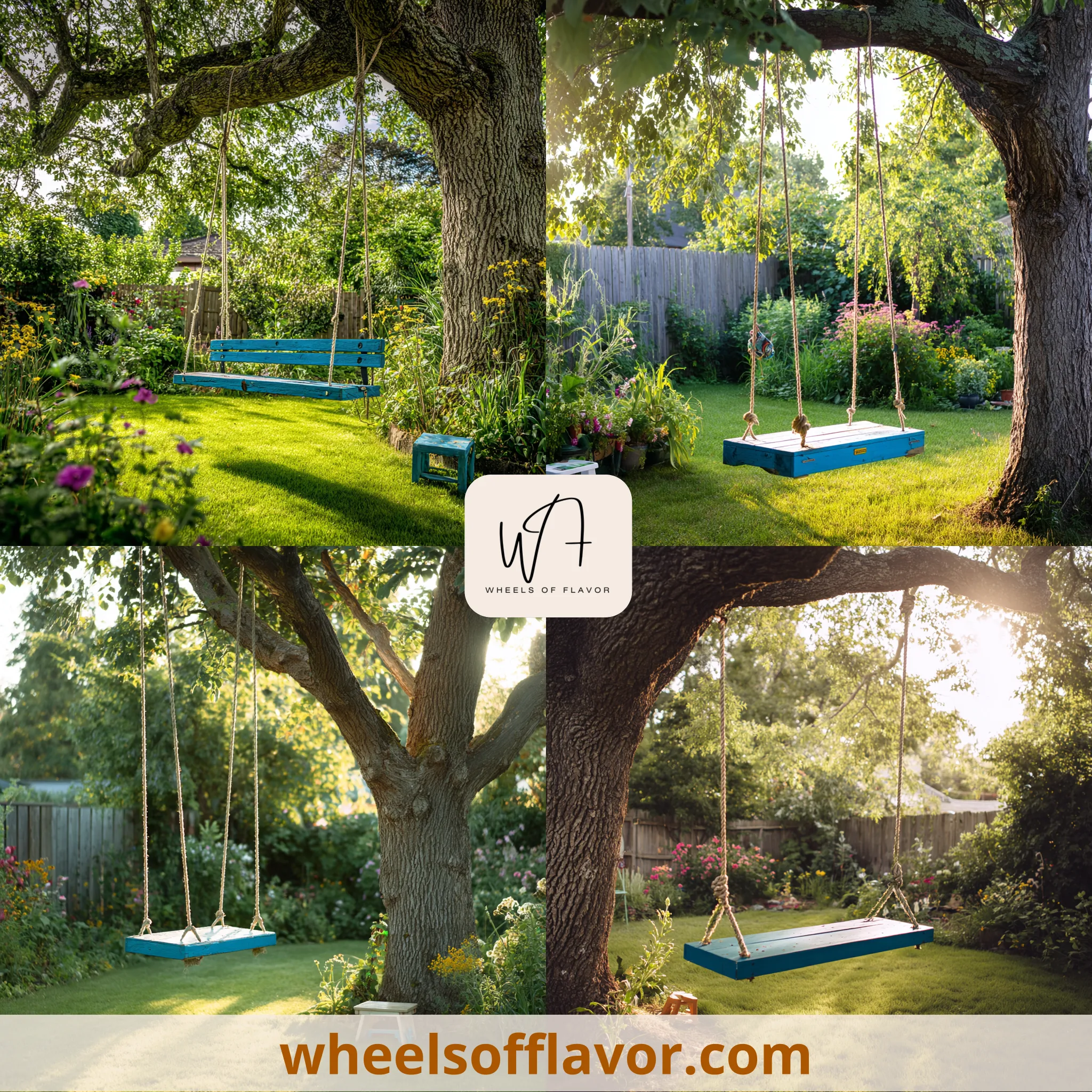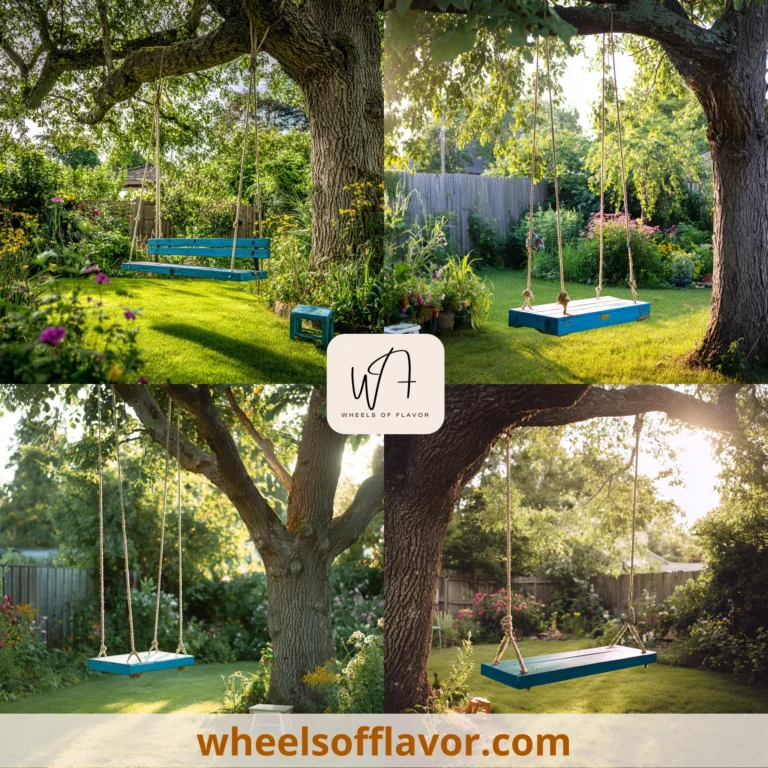
Transforming your backyard into a whimsical retreat is easier than you think with DIY tree swing ideas. These projects not only add charm and character to outdoor spaces but also provide endless fun for families and friends. A tree swing can be a focal point that encourages outdoor play, relaxation, and social gatherings, making it a valuable addition to any home. In this article, we explore innovative and budget-friendly ways to create your own swings, emphasizing safety, creativity, and personalization. Whether you’re a seasoned DIY enthusiast or a beginner, these ideas will inspire you to craft something unique. By incorporating simple materials and step-by-step guidance, you can build a swing that reflects your style and enhances your outdoor living experience. Let’s dive into the world of DIY tree swings and discover how to bring a touch of magic to your garden.
DIY Tree Swing Ideas Using Recycled Materials
Embrace sustainability with these DIY tree swing ideas that utilize recycled materials. Old tires, wooden pallets, and even discarded ropes can be repurposed into stylish and eco-friendly swings. For instance, a tire swing is a classic choice—simply clean an old tire, drill drainage holes, and secure it with strong ropes to a sturdy tree branch. This not only reduces waste but also adds a rustic charm to your yard. Wooden pallet swings are another great option; disassemble a pallet, sand it smooth, and attach it to ropes for a comfortable seat. Always ensure the materials are safe and free from sharp edges. For added flair, paint the swing in vibrant colors or add cushions for extra comfort. These projects are budget-friendly and perfect for families looking to teach kids about recycling. Remember to check the weight capacity and test the swing before use. With a little creativity, you can turn trash into treasure and enjoy hours of swinging fun.
DIY Tree Swing Ideas for All Ages and Skill Levels
Whether you're a novice or an expert, there are DIY tree swing ideas suited for every skill level. Beginners can start with simple rope swings—all you need is a thick rope and a solid tree branch. Tie the rope securely using reliable knots like the bowline or figure-eight follow-through, and add a wooden seat for stability. For intermediate DIYers, consider a plank swing: cut a piece of wood to size, sand it, and attach it with chains or ropes for a sturdy setup. Advanced projects might include a porch swing-style seat hung from a tree, requiring basic carpentry skills. Always prioritize safety by choosing a healthy tree with a thick branch and using hardware rated for outdoor use. These swings cater to kids and adults alike, promoting outdoor activity and relaxation. For inspiration, check out resources from authoritative sites like This Old House, which offers detailed tutorials. No matter your experience, these ideas ensure a rewarding project that enhances your backyard oasis.
DIY Tree Swing Ideas with Safety and Aesthetics in Mind
Safety should always come first when implementing DIY tree swing ideas. Start by selecting a healthy tree with a branch at least 8 inches in diameter and free from disease or damage. Use strong, weather-resistant materials like nylon ropes or galvanized chains to prevent wear and tear. Regularly inspect the swing for any signs of weakness, especially after storms. For aesthetics, incorporate elements that complement your outdoor decor—think colorful paints, natural wood finishes, or even adding flowers nearby. A well-designed swing not only looks great but also encourages frequent use. Consider the height and placement to avoid hazards like low branches or hard surfaces beneath. Adding a soft landing area, such as grass or mulch, can prevent injuries. These tips ensure your swing is both beautiful and safe, making it a cherished part of your home. For more home decor tips, explore our guide on outdoor spaces at https://wheelsofflavor.com/outdoor-decor. With careful planning, your DIY project will be a success.
Conclusion
In summary, DIY tree swing ideas offer a fantastic way to enhance your backyard with creativity, fun, and functionality. From using recycled materials to ensuring safety and aesthetics, these projects cater to all ages and skill levels, making outdoor spaces more inviting. By following the steps outlined, you can build a swing that not only provides entertainment but also adds value to your home. As you embark on this DIY journey, remember to prioritize durability and regular maintenance to enjoy your swing for years to come. Looking ahead, consider expanding your outdoor decor with other projects like garden benches or fire pits to create a cohesive and enjoyable environment. For more inspiration, keep exploring new ideas and share your creations with others. Happy swinging, and may your backyard become a hub of joy and relaxation!
Frequently Asked Questions
Q: What materials are best for a DIY tree swing?
The best materials for a DIY tree swing include strong, weather-resistant options like nylon ropes or polypropylene ropes for flexibility and durability, and galvanized steel chains for added strength. For the seat, use treated wood, recycled tires, or sturdy plastic that can withstand outdoor elements. Always avoid materials that may rot or weaken over time, and ensure everything is securely attached to prevent accidents.
Q: How do I choose the right tree for a swing?
Choose a healthy, mature tree with a thick branch at least 8 inches in diameter that is free from disease, cracks, or signs of weakness. Hardwood trees like oak or maple are ideal due to their strength. Avoid trees with brittle branches or those that are too young. The branch should be high enough for a good swing arc but not so high that it poses a fall risk, and ensure there's clear space beneath for safety.
Q: Are DIY tree swings safe for children?
Yes, DIY tree swings can be safe for children if built correctly. Use age-appropriate designs, such as low-to-the-ground swings for toddlers, and always supervise use. Ensure all materials are strong and secure, regularly inspect the swing for wear, and install it over a soft surface like grass or mulch to cushion falls. Follow safety guidelines, including proper knot-tying and weight limits, to minimize risks.

